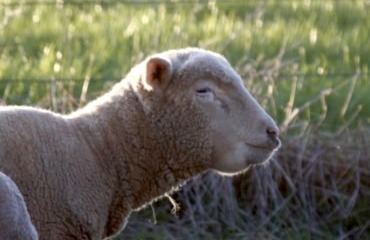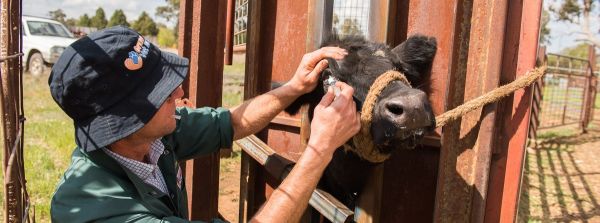|
Barber’s Pole worm is typically a disease found throughout the summer rainfall zones of Australia – Northern NSW and Queensland. However, there are pockets which occur all over Australia, and it is particularly problematic during summer rainfall periods.

This lamb has 'bottlejaw' - a typical sign of Barbers Pole disease
The need for frequent drenching to prevent significant burdens, and the subsequent production loss, anaemia and mortality that generally follows has led to significant drench resistance to all classes of drench and combinations excluding those introduced in the recent years.
Strategies to reduce the impact of this specific worm have been sought for many years, but they have had limited impact. These include:
+ Rotational grazing and strategies to minimise worm burden on pasture at critical times. The uptake of this has been very limited.
+ Worm egg counts – while this works to maximise the impact of each drench, they have only partially reduced the frequency of anthelmintic use.
+ Genetic selection – again, this works but must be maintained well for many years to realise a decrease in anthelmintic use
The alternative which is a vaccine against Barber’s Pole had been investigated for many years, and in 2014 the vaccine “Barbervax” was produced and released in Australia. The vaccine works by targeting the enzymes which the worms use to break down the blood meal they have just consumed from the sheep. This effectively starves the worms.
The main benefits of the vaccine are:
+ Significantly reduces Barbers Pole disease
+ Suppresses worm egg production - cleans up your pasture
+ Long term solution - no vaccine resistance.
+ Less drenching needed, so onset of drench resistance is delayed.
+ Easy to use - one product type, same dose per shot for all sheep.
+ No withholding period or export slaughter interval.
+ Environmentally friendly - no chemicals.
More information is available on the Barbarvax and Wormboss websites, or give us a call.
|
